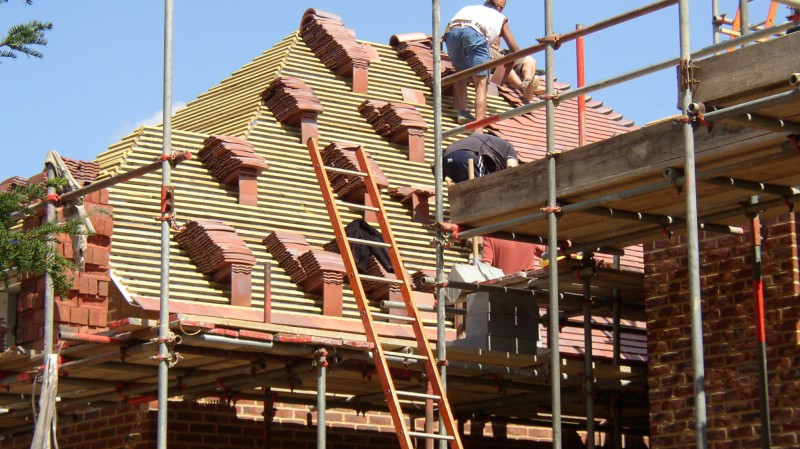You are here: Thicker insulation rules make home extensions smaller and more expensive.
Building Regulations updated to make homes more energy efficient
New building regulations to set higher standards for energy efficiency will make home extensions smaller and more expensive, say experts. Floor space is set to give way to thicker walls under the more stringent rules which came into force on June 15, 2022.
Estimates suggest floor space could potentially be reduced by 1.8 metres square for an average sized extension. However, in the longer-term, the changes will mean more energy efficient properties and lower heating bills.
British homes tend to be poorly insulated with less than half (49%) having cavity or wall insulation, according to the latest government figures. The new rules are part of a drive to make properties more energy efficient - less likely to lose heat in winter or overheat in summer. Currently heating and powering buildings accounts for 40% of the UK’s total energy use. Ultimately, the aim is to cut carbon emissions, and combat climate change.

What difference will the new regulations make?
The changes to Part L of the building regulations are a step towards the government’s target to deliver zero carbon ready homes by 2025. Under the new regs all new homes must produce around 30% less CO2 than previously required. New dwellings must have a Standard Assessment Procedure (SAP) test which looks at overall energy efficiency at both design stage and as built.
For people extending or renovating existing homes, new or replacement “thermal elements” (doors, windows, roofs and walls) must adhere to the new Part L requirements. The maximum U-values (the amount of energy that is lost through any material) for windows has tightened from 1.6 to 1.4 or Band B, for example.
As properties become more airtight, there are also regulations to improve the quality of air in a room, such as having trickle vents (very small openings) within window frames. These vents allow some ventilation, even when the window is closed.
Under the new regs, walls must now have a maximum U-value of 0.18. Andrew Mellor, a partner at consultancy PRP, estimates homeowners would need to add an extra 7cm of non-combustible insulation to achieve the new standards or splash out on high tech alternatives, such as foam-based insulation or vacuum products that insulate walls without adding too much thickness. Thicker walls could potentially impact on room size. Mellor estimates an extra 7cm of insulation on three external walls will lead to a loss of about 1.8m2 for an extension measuring 3m x 4m, typical for a semi-detached property.
Floors and roofs will also need better insulation. What’s more extensions will be required to have no more than 25% floor area as glazing (windows, roof lights, roof windows) or compensate with other energy efficiency measures which allow more design flexibility. Mellor expects to see less glazing and small, more energy efficient windows. “Lots of glass can also mean the room gets too hot in summer months unless external shading is introduced,” he said.
People extending their homes may be required to install new heating systems depending on the size of project. The updated maximum flow temperature is now 55 degrees C compared to 75 degrees C previously. This will require radiators with a larger surface area, taking up more wall space. However, it will make it easier to retrofit homes with heat pumps which operate at lower flow temperatures.
How significant are the new regulations?
Brian Berry, chief executive of the Federation of Master Builders, says changes to the building regulations are arguably the most significant for years. He said: “The new measures will improve the energy efficiency of homes and require new materials, testing methods, and systems to be installed. For example, new windows will need to be more thermally efficient, which is dependent on their frame material and glazing type. Rooms will likely need thicker insulation, which depending on design requirements, could mean widened external walls need to be factored into a build.”
Other experts have welcomed the new regulations but argued they could go a lot further. Mellor said: “They only tackle the new room and not the rest of the house, so have some benefit to the environment and occupants in terms of comfort and energy bills. But somehow, we need to tackle the rest of the house in relation to increasing bills and climate change impacts.”
How much will prices increase due to the rule changes?
It is not yet clear how much overall costs will rise due to the overhaul of building standards. Mellor said: “ I cannot say how much. If walls are thicker, extra costs are in foundations, insulation thickness, wall ties and lintels - as all will be wider.” Berry agreed the new rules will add to the overall bill at a time when costs are already increasing with 98% of Federation of Master Builders (FMB) members experiencing a rise in material costs in the last quarter. He said: “While it’s vital that energy efficiency in homes is tackled, as the UK has some of the worst homes for heat loss in Europe, SME (small to medium enterprise) builders will face the brunt of these costs and inevitably have to pass them on to the consumer.” However, the long-term effects of the changed regulations will be more energy efficient homes and significant savings on heating bills, adds Berry.
The new regulations came into effect on 15 June 2022. But for projects already in the planning system there is some flexibility. If you applied for a building notice or have submitted full plans to a local authority before June 15 2022, your project will still be assessed under the old Part L regs so long as building work begins before June 15 2023.
If you are looking to make some home improvements, you may find some of these services useful
Building Regulations
Find details of local experts who can help with Building Regulations
Builders
Find local help with a building project
Architectural Design Services
Find local Architectural Design experts
Structural Inspections
Find an expert to carry out a structural inspection
Building Surveys
I want a local surveyor to do a Building Survey for me
Choose which Architectural service you require
If you are not sure which service you require, check out the options available...


